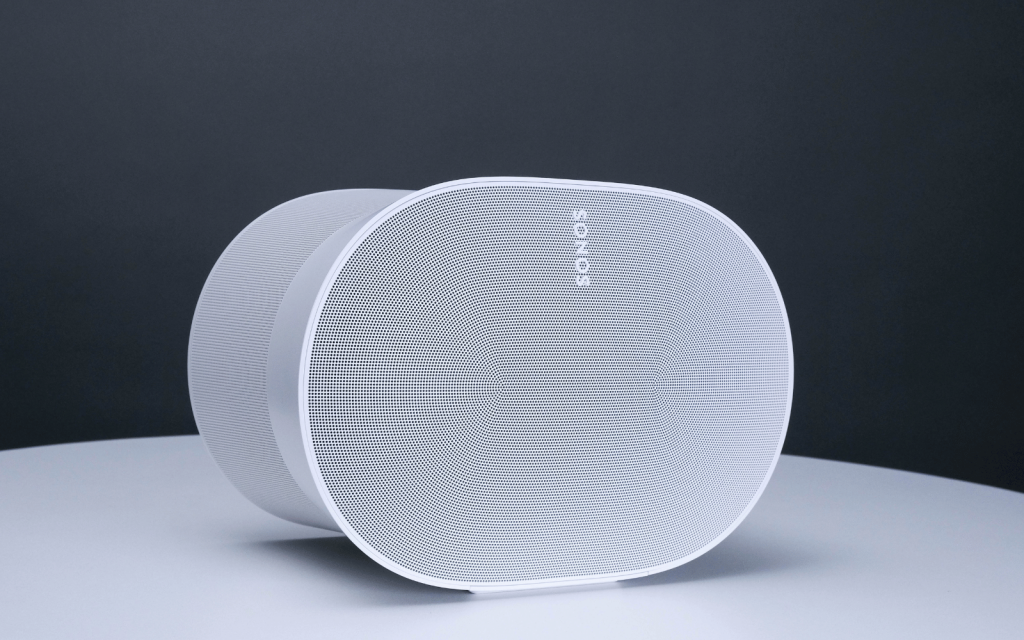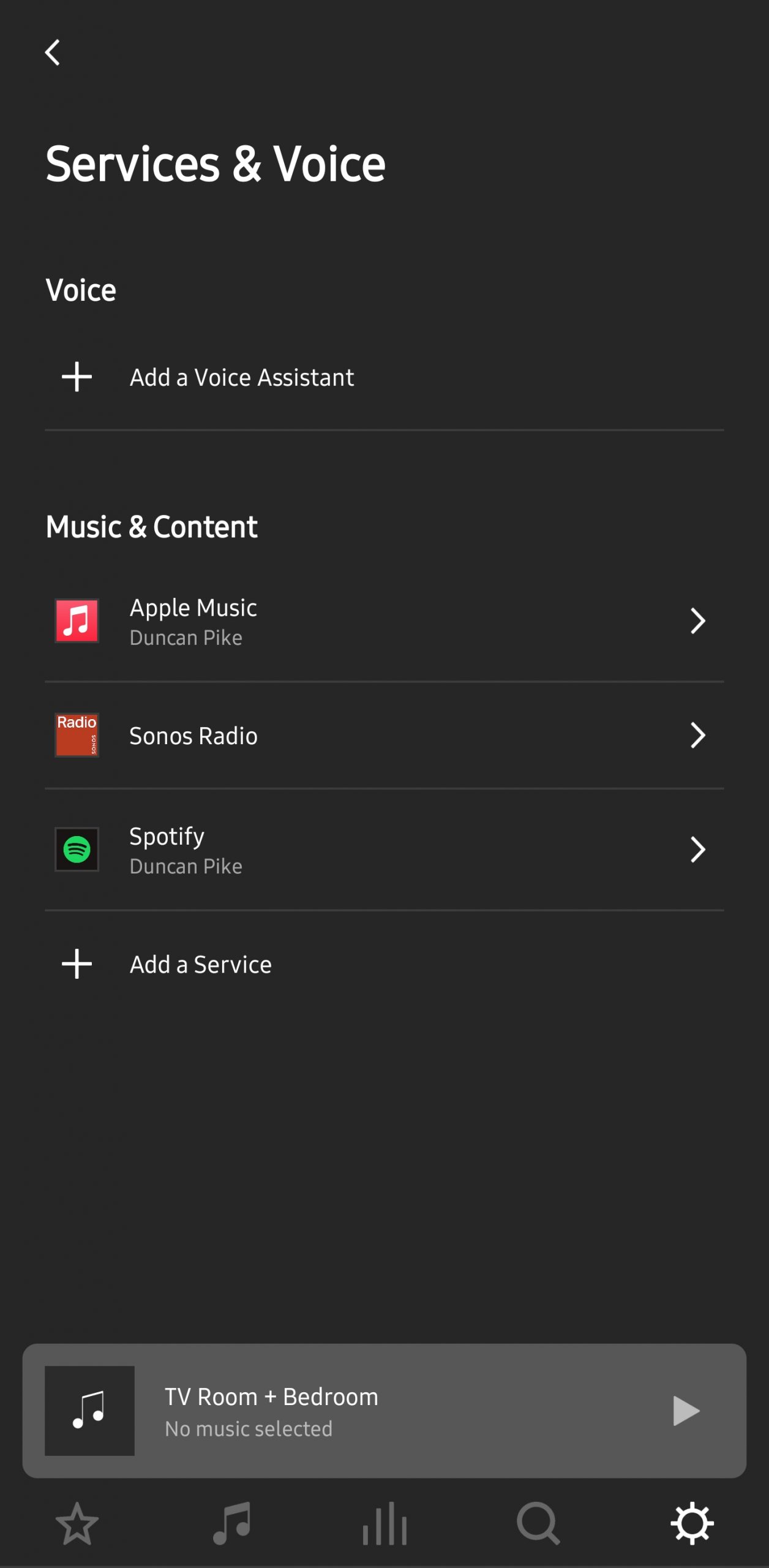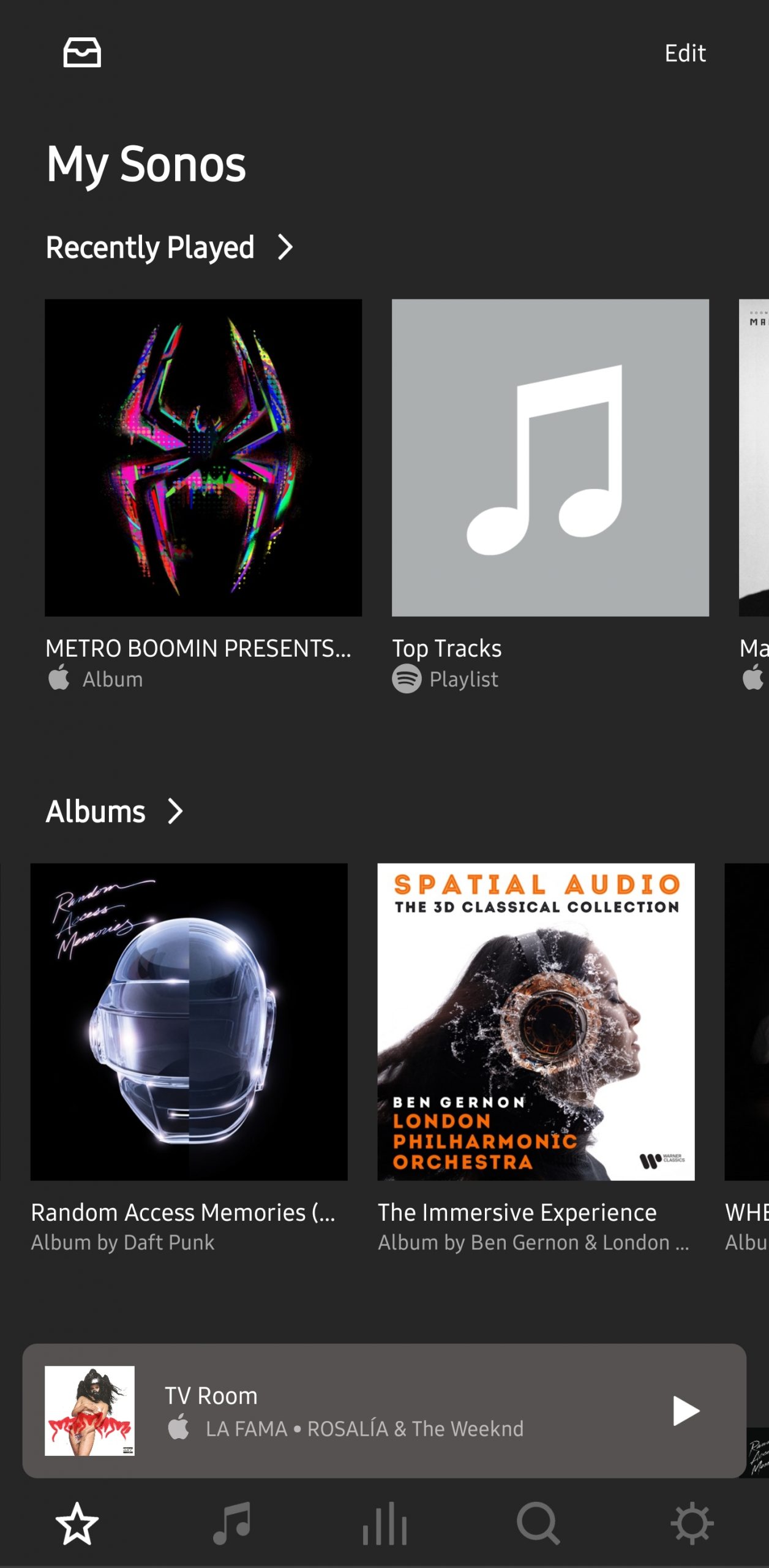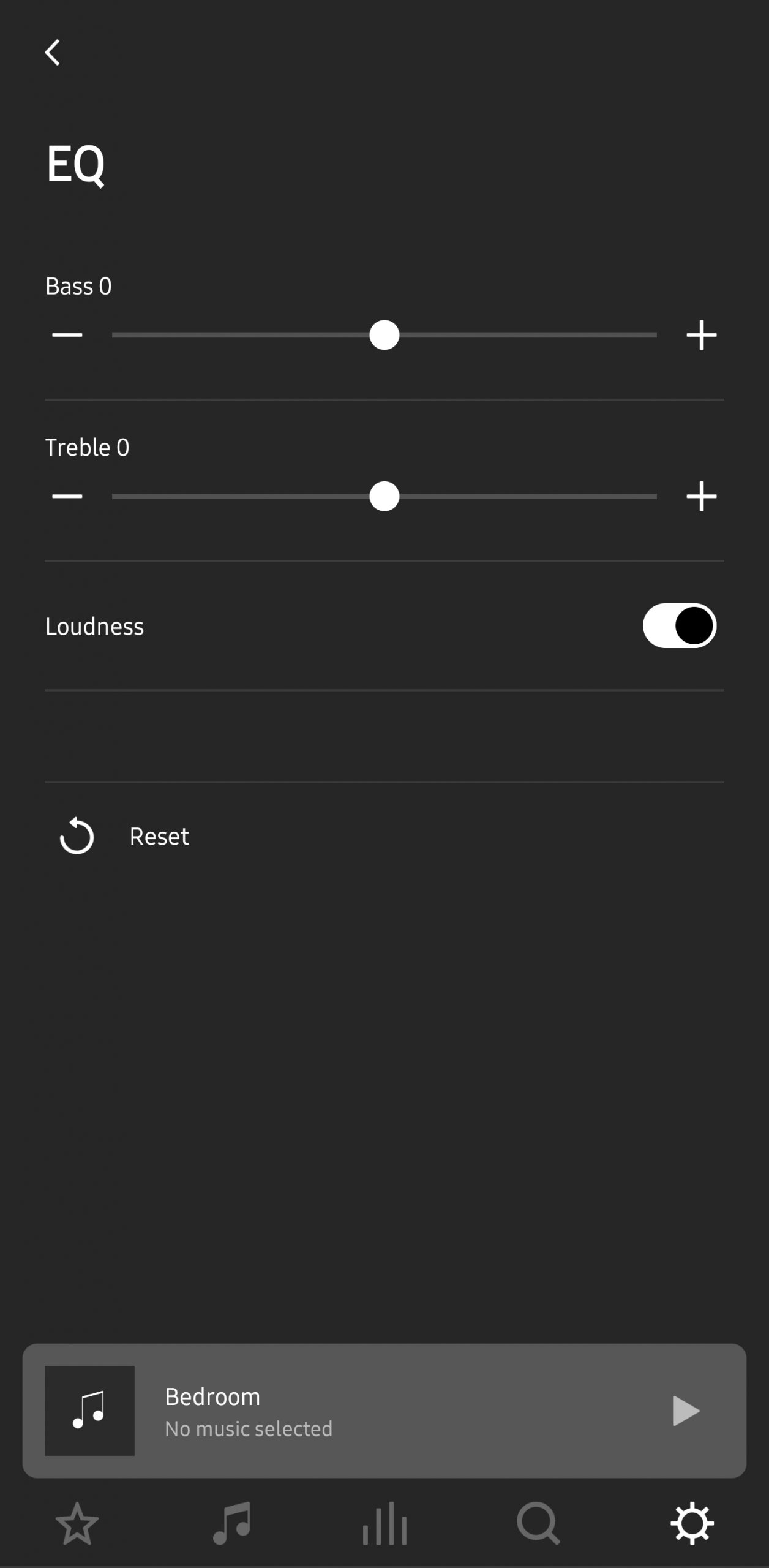Unashamedly premium and (mostly) brilliant, this Sonos will bring a big smile to your face if you've got the cash and don't mind prospecting for the good spatial audio mixes in a stream of inconsistency.
-
Audio output
-
Connectivity
-
Set-up
-
Value
The Sonos Era 300 represents exactly what the name suggests – a new era for Sonos. While the Era 100 is a direct replacement for the Sonos One, the Era 300 is the start of something new. Sonos claims it doesn’t replace the Five (R15,000) and we’re inclined to agree. The Sonos Five can’t match the Era 300’s spatial audio smarts even if it wanted to, especially not at R13,000. If you’re keen on getting your foot in the spatial audio door, then the Era 300 is not optional.
Like the Five, you can seamlessly pair two Era 300s for what should be a vastly superior and expansive soundstage. Or, if you feel like overdoing it, you could use a pair as rear surround speakers in a Sonos home theatre setup. If you’re already rocking the Arc or Beam (Gen 2), using two Eras will mean your entire setup becomes Dolby Atmos-capable – up to a 7.2.4 system if you’ve got the cash for it.
But top of the list for the Era 300 is standalone support for what some people call spatial audio and others call Dolby Atmos Music. We’ll use both terms interchangeably here but essentially it enables more immersive ‘3D’ mixes to be created by adding extra metadata to the audio signal that describes the sound’s position, movement, type, intensity, speed, and volume.
Spatial audio appears to be sticking around with scores of new tracks being created in the format and masses of old stuff being reimagined for it. The difference it makes to music largely depends on who’s done the mixing and also (but slightly less so) how you’ve placed the Era 300. Sonos has a guide for best placement practices but it does mean the perceived difference will vary from person to person and album to album. We found new albums created and mixed for spatial audio from the outset generally provide a better spatial audio experience than most (but not all) albums adding it after the fact.
The belt’s too tight
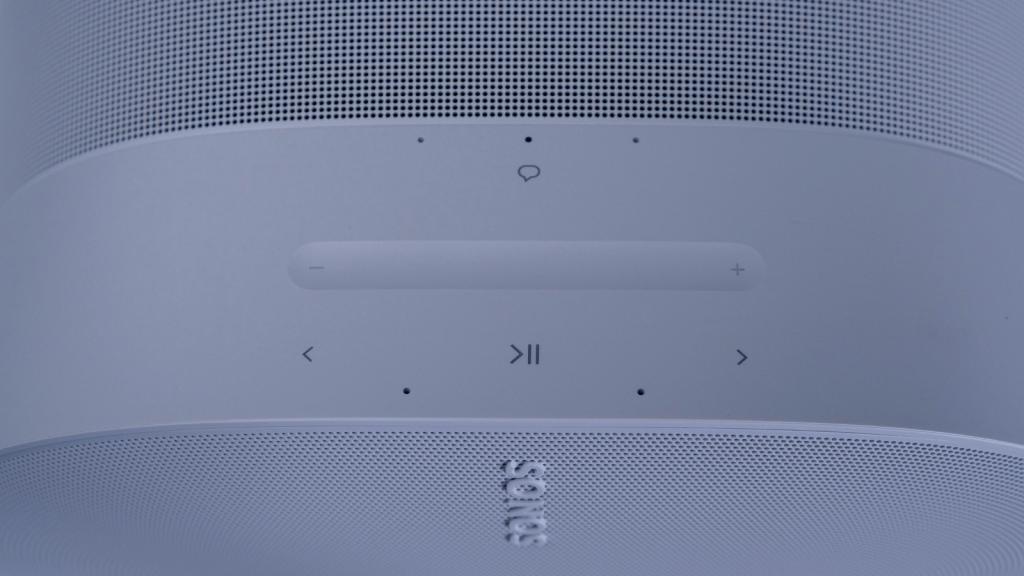 Available in black or white, the Era 300 is an interesting-looking thing – pinched in the centre like an hourglass. This is due to the driver setup; two woofers are angled left and right, and four tweeters join them, two above the woofers to the sides, one firing upwards, and one to the front.
Available in black or white, the Era 300 is an interesting-looking thing – pinched in the centre like an hourglass. This is due to the driver setup; two woofers are angled left and right, and four tweeters join them, two above the woofers to the sides, one firing upwards, and one to the front.
The touch capacitive controls are on the top as with most Sonos devices, but the key control – volume – has been redesigned and is now an indentation. You can slide your finger along the groove to go louder or quieter or tap on the ‘+’ and ‘-’ at each end for small changes.
Other than the orifice to give it power, around the back you’ll find the Bluetooth pairing button (yes, there’s Bluetooth now), mic kill-switch, and a USB-C port. This will serve as a Line-In if you’re looking to hook up a turntable or similar device with a 3.5mm output but you’ll need to buy the $20 (R360) Sonos Line-In Adapter separately.
For wireless connectivity, Wi-Fi 6 will be how most people connect, with the Era 300 joining your network during setup. Sonos has also brought Bluetooth connectivity over from its Move and Roam portable speakers which will support audio streaming, albeit at a lower quality, from any device that will do it. There’s also AirPlay 2 support for wireless hi-res music streaming from one of Apple’s devices.
Hands-free control is available through Amazon’s Alexa or Sonos’s own voice assistant, although the latter is only there to help you with music playback. Don’t ask for a weather forecast, you’d be better off going outside to see for yourself. Google Assistant support is absent but given the relationship between the two companies that’s hardly surprising.
The Sonos app is still far from perfect but you’ll get the most from your Era 300 this way. In fact, it’s the only way to play spatial audio tracks, casting or AirPlay will only allow stereo playback. By signing in to your streaming service(s) of choice in the app, you can access most of what you usually listen to or discover something new from the tons of free radio stations – all from one place (apart from Spotify podcasts). For some reason, we struggled with those on the Sonos app, in that it refused to acknowledge they existed in our library.
If this isn’t your first Sonos product we won’t need to tell you how great the experience is of adding it to your system or how easy it is to set up a multi-room environment that allows individual volume control. If you haven’t had the chance to play around with Sonos’ ecosystem, you’re missing out.
Spatial delivery
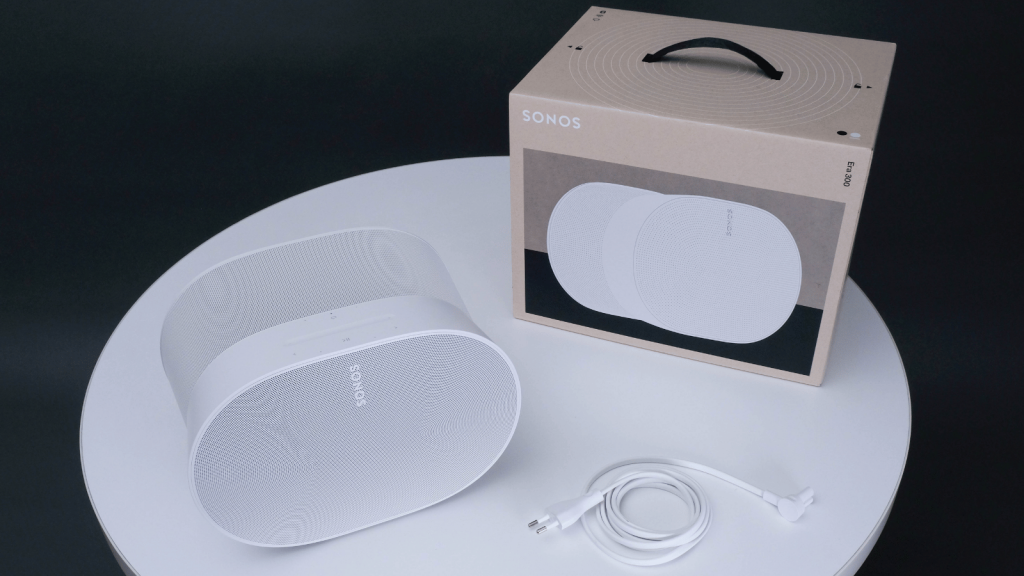 Did spatial audio make us wish we could hear things for the first time again? Sort of, but mostly no.
Did spatial audio make us wish we could hear things for the first time again? Sort of, but mostly no.
When you find a good spatial audio track, the Era 300 can make more of a difference than you’d expect. But those are generally few and far between and it doesn’t help that it only supports spatial audio from Apple Music or Amazon Music Unlimited – sorry Tidal and Sony 360 fans.
We used a combination of Apple Music and Spotify via the Sonos app to compile a playlist of songs that were available on both platforms, the first for spatial audio songs and the latter for stereo playback. This included (among others) Daft Punk’s 10th-anniversary reissue of Random Access Memories, Pink Floyd’s 50th-anniversary reissue of Dark Side of the Moon, Billie Eilish’s Happier Than Ever, Optimist from Billie’s brother and producer Finneas, Fleetwood Mac’s Rumours, and The Immersive Experience from the London Philharmonic Orchestra conducted by Ben Gernon. There were others of course but we mentioned these because they did the best job of highlighting the difference that a well-mixed spatial audio track can make.
First, we wanted to get a better idea of the Era 300’s stereo performance. We noted in our first impressions that we found stereo content from the 300 to be a little dull or dark due to the lonesome front-firing driver. After spending a decent amount of time in front of, next to, and walking around our Era 300, we’re sticking to that assessment.
Again, we’re not saying the 300’s stereo playback is rubbish. Overall, the tonal balance is decent (although we’ll admit the bass response could do with a little more punch). The clarity of vocals from that front-facing driver impressed us again and the side-firing drivers do result in a wider stereo separation than you’d expect. But the Era 300 will be outshone by similarly priced stereo-focused speakers – like the Sonos Five that it isn’t replacing.
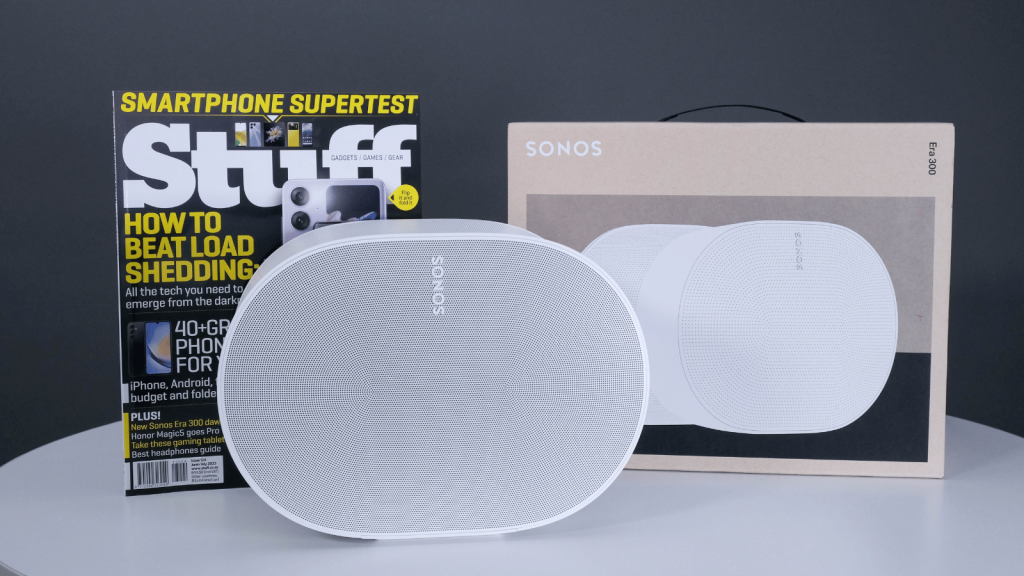 And that’s okay, because like we said at the start, spatial audio is the focus here and what it was purposely built for. We’ve heard other people call spatial audio from the Era 300 “immersive” or “atmospheric” but we wouldn’t go that far. While switching between the stereo and spatial mix of the same song more often than not the spatial mix provided a fuller, richer sound and revealed subtle details that were subdued or overpowered in the stereo mix or, in some cases, entirely absent.
And that’s okay, because like we said at the start, spatial audio is the focus here and what it was purposely built for. We’ve heard other people call spatial audio from the Era 300 “immersive” or “atmospheric” but we wouldn’t go that far. While switching between the stereo and spatial mix of the same song more often than not the spatial mix provided a fuller, richer sound and revealed subtle details that were subdued or overpowered in the stereo mix or, in some cases, entirely absent.
This isn’t always for the better.
The industry is still learning the do’s and don’ts of spatial audio mixing, especially with adding the tech to older content. When that isn’t done well the mix loses definition in the producer’s pursuit of a wider or ‘immersive’ sound stage. We won’t single anyone out but, curiously, we found spatial mixes of hard rock and metal albums to be generally worse than their stereo counterparts and Rush’s Tom Sawyer was the only exception we could find to that.
Sonos Era 300 verdict
If you don’t have an Apple Music or Amazon Music Unlimited subscription and you don’t plan on getting one, the Era 300 could still be worth it for you but it wouldn’t be our first recommendation. Yes, stereo music does still sound relatively good but you’d be paying a lot to ignore most of the good bits of the Era 300.
If you 1) do have the ability to stream spatial audio, 2) actually prefer or at least enjoy the difference it makes to your music, and 3) don’t mind doing the leg work to find the good stuff, then we would absolutely recommend the Era 300. And if you have an Arc or 2nd-Gen Beam (and the cash), spoil yourself with two. If you didn’t tick all three boxes then you’d probably be better off with something else.

